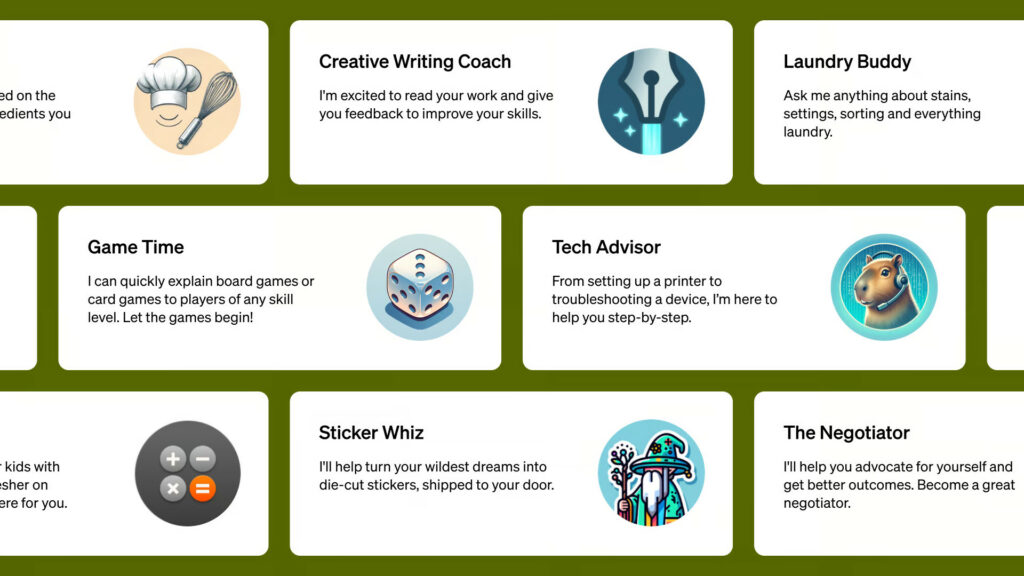
11-7 #NoWar : Samsung Display sues BOE; Changxin Xinqiao Memory Technologies has raised CNY39B; Samsung will allegedly be using a frame case made out of titanium in its upcoming Galaxy S24; etc.

Apple’s A17 processor was the first chip to use TSMC’s N3 (3nm-class) process technology, the company has expanded its N3 lineup with a family of PC-oriented M3 chips for desktop and laptop computers. Analyst Jay Goldberg from Digits to Dollars believes the company spent as much as USD1B on M3’s design and tape-outs alone. Apple’s M3 family consists of 3 fairly complex CPUs for now: the 25B -transistor M3 that’s aimed at entry-level and mainstream desktops, laptops, and high-end tablets; the 37B -transistor M3 Pro for performance-mainstream machines; and the M3 Max that packs 92B transistors for high-end laptops and entry-level workstations. (My Drivers, Hot Hardware, Tom’s Hardware, Digits to Dollar)

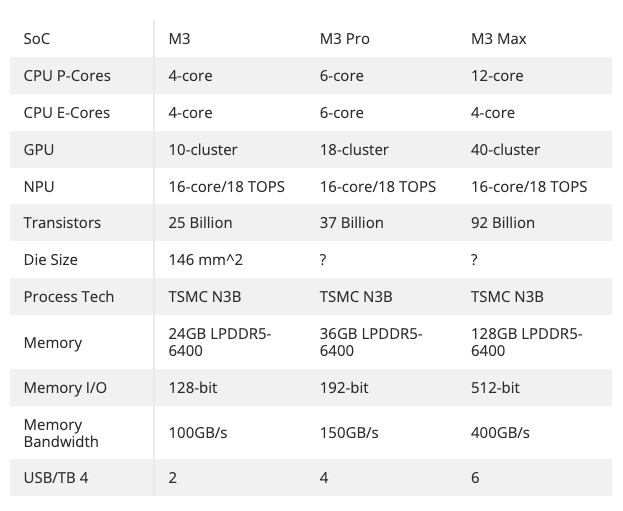
Intel CEO Pat Gelsinger has revealed what he believes are Intel’s 3 greatest mistakes. He has clearly identified Intel’s failed early bid to get in on the mobile phone industry as a big loss. At the time, in 2008, Intel was producing its Atom processors for mobile devices but failed to secure a long-lasting foothold there with it. He has then brought up Intel’s acquisition of no-less-than 5 AI companies which still did not yield a GPU, work that he has begun work on with Larrabee before being forced out. Lastly, he has no issue in pointing out the need for Intel to develop what he calls a “great foundry”.(My Drivers, Yahoo, FPS Review, Digit)
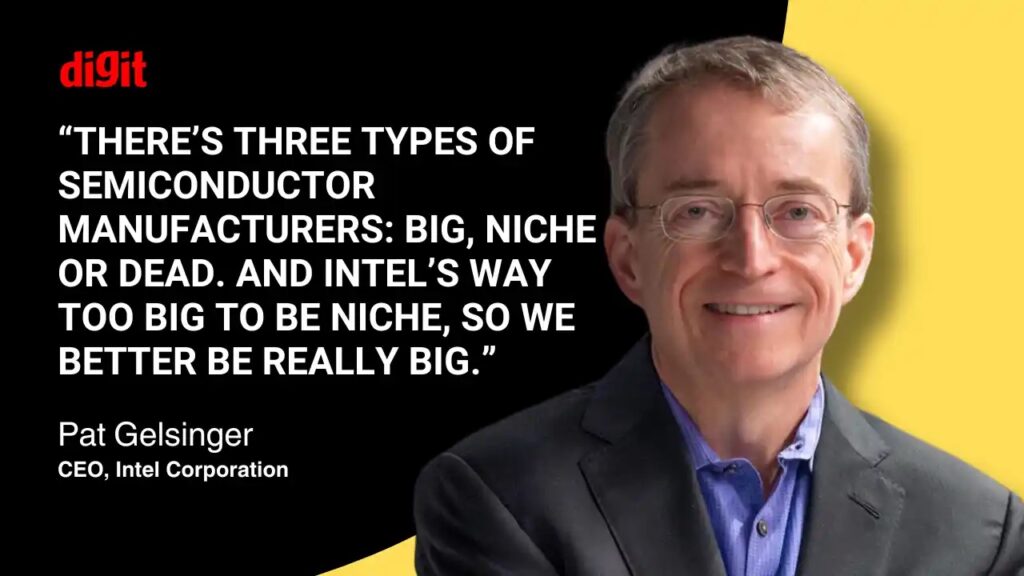
MediaTek has announced the Dimensity 9300. The Dimensity 9300 is an octa-core chipset with a 4+4 CPU configuration. It has four ARM Cortex-X4 prime cores clocked at up to 3.25GHz (only one at the maximum speed, with the other three operating at 2.85GHz) and four Cortex-A720 mid cores at 2.0GHz. The new Dimensity chip supports LPDDR5T RAM—the world’s fastest smartphone memory— at 9,600Mbps at UFS 4.0 storage with Multi-Circular Queue (MCQ). The Dimensity 9300 also boasts MediaTek’s next-gen APU that offers eight times faster transformer-based generative AI. It reduces power consumption by 45 percent, ensuring a fast and efficient on-device AI performance. The chip supports large language models (LLMs) with up to 33B parameters. The company has named Meta Llama 2, Baichuan 2, and Baidu AI LLM among the supported LLMs.(Android Authority, Android Headlines, GSM Arena, CN Beta, MediaTek)
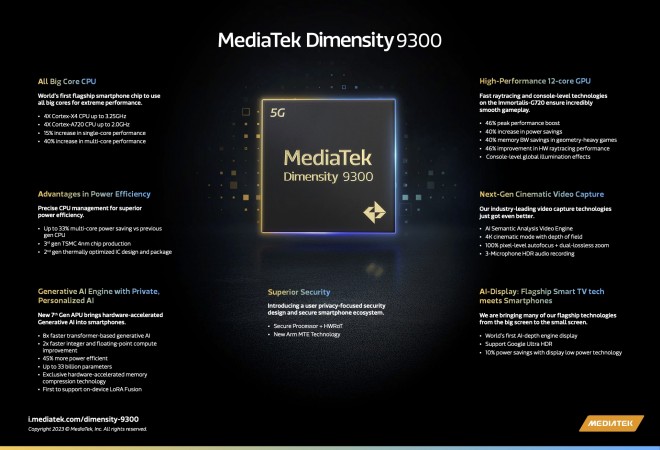

Samsung Display has filed a complaint against BOE Technology and seven of its affiliates to the United States’ International Trade Commission (ITC), claiming the Chinese display makers violated trade secret regulations. According to the document from the ITC, Samsung Display filed the complaint on 31 Oct 2023, accusing the Chinese rival of violating a US Tariff Act in the US’ importation and sales of organic light-emitting diode display modules and components in the US. Samsung Display and BOE have been fighting each other ever since BOE fell under ITC investigation at the beginning of 2023 after Samsung Display tried to stop wholesalers from commercializing “cloned” OLED panels in the USA. These panels were manufactured illegally in China based on stolen Samsung patents. (Android Headlines, Korea Herald, SamMobile, Reuters)
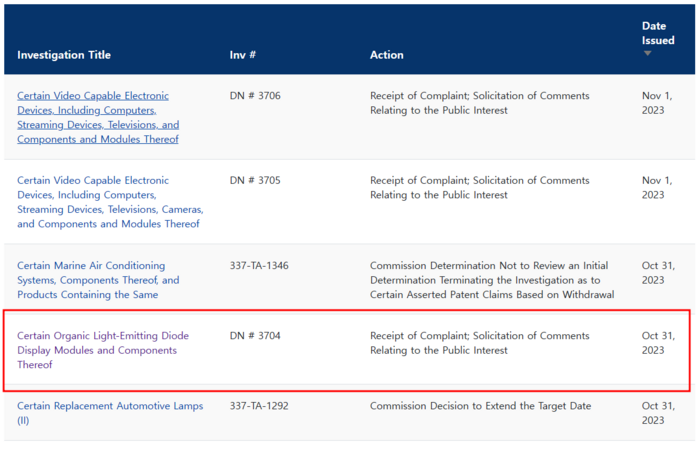

Samsung has announced its new 50MP ISOCELL GNK sensor boasting improved video recording capabilities and wider dynamic range for stills. The sensor is a direct successor to the 50MP ISOCELL GN1 that other OEMs and Samsung itself widely use. the GNK is identical to the GN1, which is 50MP 1/1.3” in size and offers 1.2µm pixels. Additionally, the sensor can capture images with a dynamic range of up to 120 dB and in Pro mode, the GNK can capture 14-bit RAW images. To achieve such wide dynamic range, the GNK works in three different ISO modes that also help reduce motion artifacts. (GSM Arena, SamMobile, Samsung, CN Beta)
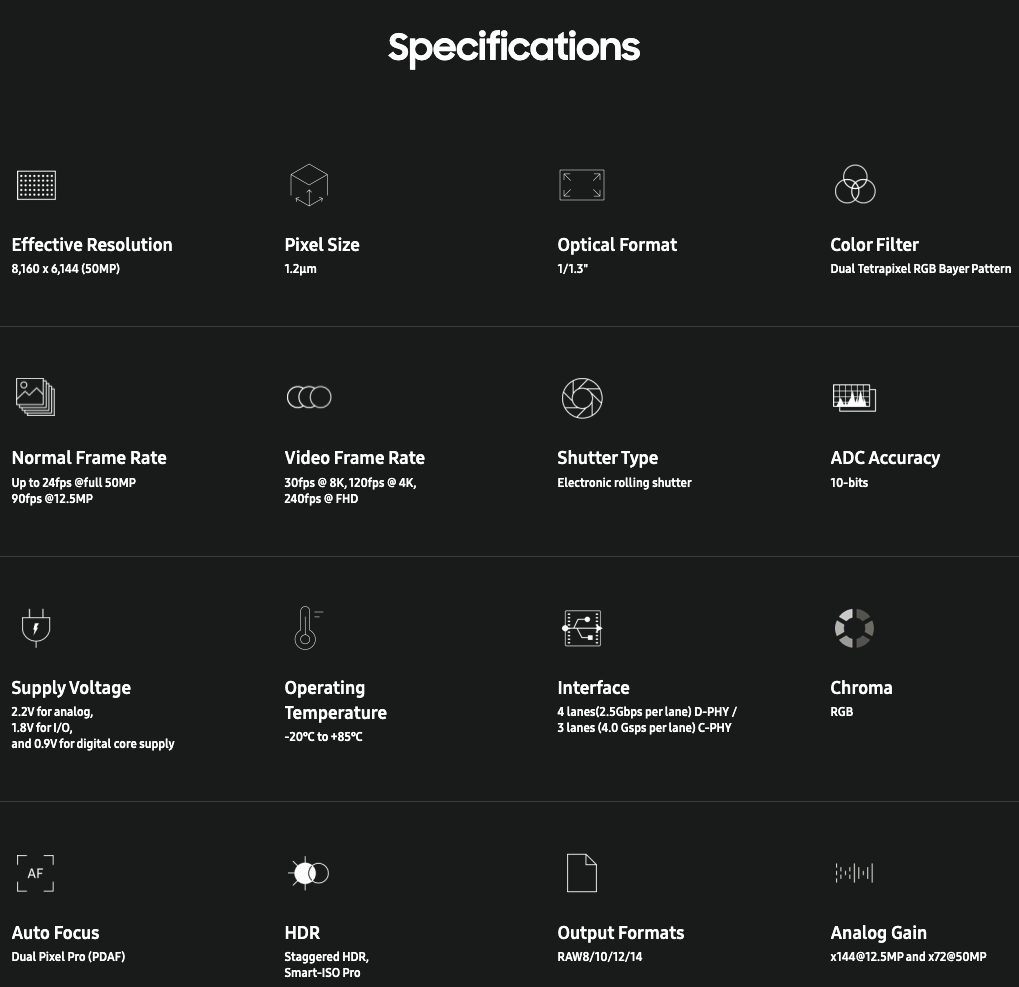

Samsung and SK Hynix are currently in the lead when it comes to manufacturing and supplying HBM to global clients that include the likes of AMD and Nvidia. Micron, the third-largest player in the DRAM industry from the U.S., is also set to ramp up production for next-generation HBM3E by early 2024. The current HBM market is witnessing a faster rate of demand growth than supply, resulting in a supply deficit. Gartner predicts that HBM demand will increase eightfold, from 123M GB in 2022 to 972M GB by 2027. TrendForce anticipates that HBM demand 2023 will increase by 58% compared to the previous year and will experience an additional growth of 30% in 2024. CitiGroup Research Center forecasts 2023 HBM supply to demand ratio at -13%, which will grow to -15% in 2024, with a balance expected by 2027. According to Gartner, HBM consumption will likely increase by over three times by 2027. Within the industry, it’s estimated that, due to persistent supply shortages, HBM prices could be 7-8 times higher than general-purpose DRAM. (CN Beta, Business Korea, WCCFTech, ZDNet)
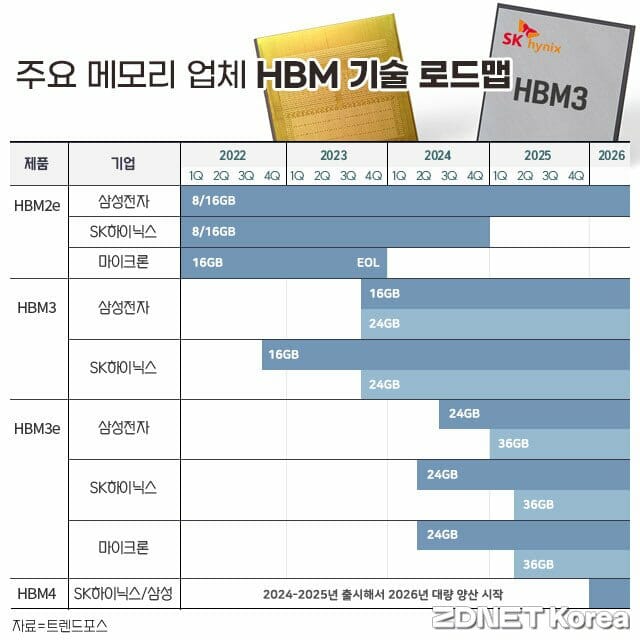
TrendForce reports that 4Q23 contract prices for mobile DRAM are poised to see an increased quarterly rise of 13–18%. As of 31 Oct 2023, general-purpose DDR4 8Gb 16×8 2133MHz was priced at USD1.5, a 15.38% increase from the previous month. NAND Flash is also joining the party, with contract prices of eMMC and UFS expected to climb by approximately 10–15% in the same quarter. From Sept to Oct 2023, the price of 128Gb 16×8 MLC NAND was also at USD3.88, a 1.59% increase. This quarter is set to star mobile DRAM, traditionally the underperformer in profit margins compared to its DRAM counterparts, as it takes the lead in this round of price increases. On the supply side, Samsung’s significant production cut and Micron’s rolling out a price hike of more than 20% continue to lay the foundation for industry-wide confidence in price increases. (The Elec, TrendForce, TrendForce)
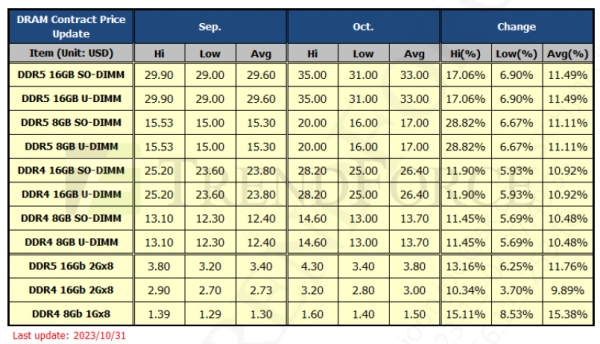
Semiconductor start-up Changxin Xinqiao Memory Technologies has raised CNY39B (USD5.4B) from government-backed investors, a sign Beijing is doubling down on its efforts to achieve technological self-sufficiency and counter US sanctions. In its latest funding round, Hefei-based Changxin Xinqiao secured CNY14.6B from the state-backed China Integrated Circuit Industry Investment Fund Phase II in late Oct 2023 and funding from two other investors affiliated with the local government. Founded in 2021, the little-known Changxin Xinqiao shares some shareholders and its general manager with China’s leading DRAM chip maker Changxin Memory Technologies, which is also headquartered in the eastern Chinese city of Hefei.(Gizmo China, SCMP, Tom’s Hardware, MoneyDJ, Laoyaoba)
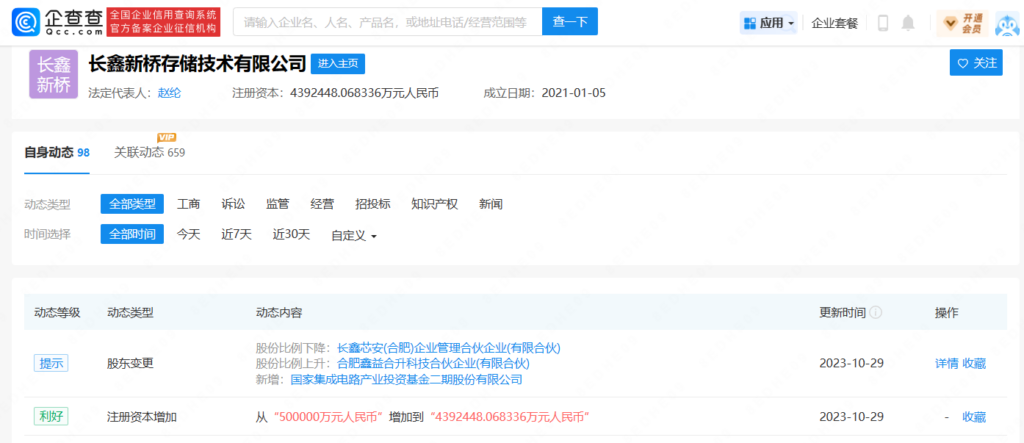

Apple is developing custom batteries with significantly improved performance that it aims to bring to its devices starting in 2025. The company is reportedly seeking to create an “all-new” kind of battery with significantly improved performance by becoming directly involved in its use of materials. Apple is apparently curating the battery’s cathode materials to determine its performance, energy density, output, and stability. The battery apparently uses a completely different composition from those that currently exist on the market, adopting a new composition of nickel, cobalt, manganese, and aluminium. (MacRumors, ET News)

Samsung will allegedly be using a frame case made out of titanium in its upcoming Galaxy S24 Series. The Ultra model in the series will be the first to adopt the titanium material and the company plans to expand the application depending on reception. South Korean supplier KH Vatec was among other multiple Chinese case suppliers Samsung is working with. Chinese company Solomon processes the titanium alloy. This is supplied to Samsung and its suppliers and the alloy is attached to the backside of an aluminum case. Samsung’s aluminum cases used in premium phones currently cost less than USD20. Samsung has tentatively set a goal to make 15M units of titanium frame cases, which matches the number of Galaxy S23 Ultra models shipped in 2023. (The Elec, MacRumors, SamMobile)
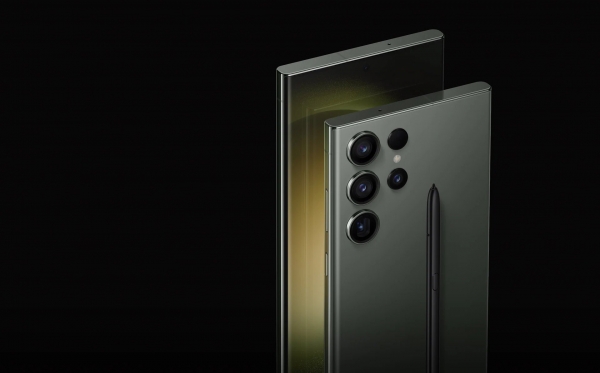

Ziply Fiber has launched a symmetrical 50 Gbit/s broadband service that is available across its entire fiber network in Washington, Oregon, Idaho and Montana. The company’s new 50-Gig offering won’t rely on passive optical networking (PON) but will instead be served by a fiber-based Ethernet connection and require some additional, specialized equipment at the customer’s home. Ziply Fiber does use XGS-PON for its 2 Gbit/s and 5 Gbit/s home broadband tiers. As part of the USD600 installation fee, Ziply Fiber will run fiber to the customer’s home and supply a compatible QSFP28 (a quad small form pluggable) fiber-optic transceiver. However, customers are on the hook to obtain computers and routers that can handle 50 Gbit/s. Ziply Fiber is recommending the Mikrotik CCR2216-1G-12XS-2XQ Ethernet router, which typically sells for USD2,200 at outlets such as Amazon and Flytec Computers. Customers who use different equipment will need to ensure their router/switch supports a QSFP28 port.(CN Beta, Ziply Fiber, CNET, Bloomberg, Fierce Telecom, Light Reading)
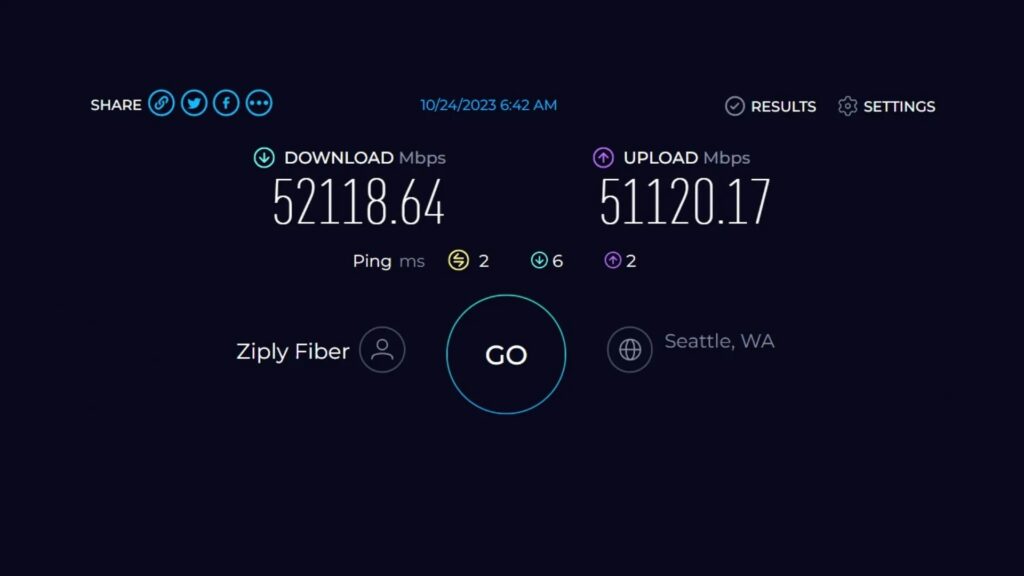

Samsung has reportedly set shipment targets of 35M units for the Galaxy S24 series, which is 10% higher than the Galaxy S23 series. Samsung is expected to announce the Galaxy S24 series in Jan 2024, and it will be the company’s first “AI Galaxy Phone”. In comparison, the Galaxy S21 and the Galaxy S22 sold less than 30M units, while the Galaxy S23 series sold 31M units. Samsung has revealed that it expects to ship 253M smartphones, including the Galaxy S24, in 2024. Over 75% of Samsung phones sold worldwide are lower-priced models. Samsung’s smartphone ASP (Average Selling Price) is USD295, while that of Apple is USD988. Samsung is reportedly planning to sell more high-end phones and wants to see more high-end Galaxy phones in the top 10 best-selling smartphones list. Moreover, Samsung expects to sell more than 10M Galaxy Z series smartphones. (SamMobile, Phone Arena, Korea Daily)
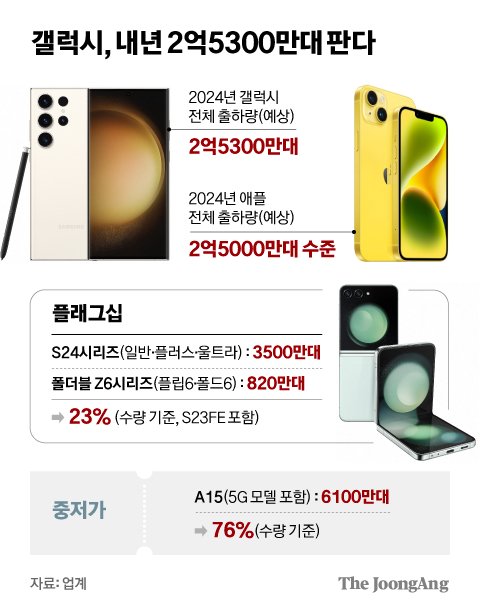
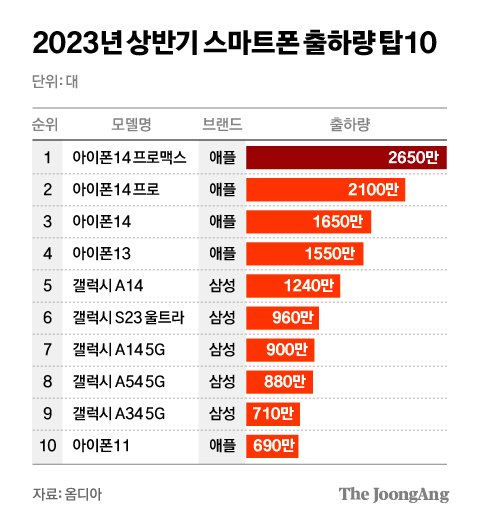
Samsung is allegedly pursuing the option to offer on-device generative AI on the Galaxy S24 based on a subscription model. It is going to launch on the Galaxy S24 along with a number of devices that are coming in 2024. (CN Beta, SamMobile, WCCFTech, Twitter)
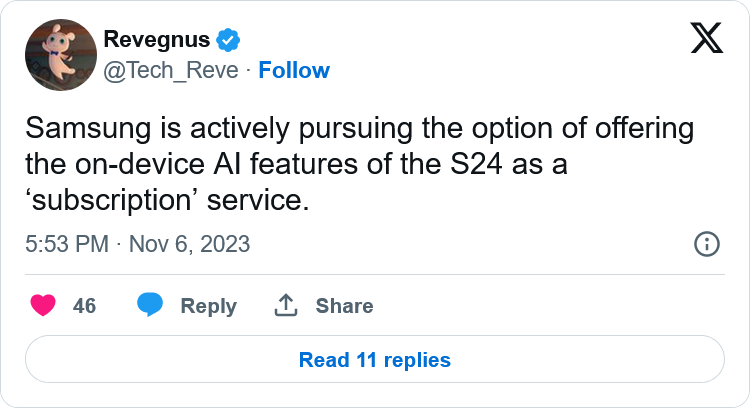

According to Bloomberg’s Mark Gurman, Apple is preparing to update its entire iPad lineup in 2024. This is likely to be an extensive set of changes, as Apple has not introduced a new iPad of any variation at all in 2023. Gurman adds that new low-end AirPods will be arriving in 2024, with an updated AirPods Pro model in 2025. (CN Beta, Apple Insider, Bloomberg)

Nio’s CEO William Li says the company is expected to reduce “around 10%” of its positions after weeks of discussions over the firm’s 2-year operational plans. The decision was made based on its newly defined priorities to continue its long-term investment in core technologies; ensure it has the sales and service capabilities to compete; ensure its products and brands are released as scheduled; consolidate duplicate departments and remove inefficient positions; and improve resource efficiency and cut project investment that doesn’t contribute to its financial performance in the upcoming 3 years.(TechCrunch, CN Beta, 163.com, STCN)
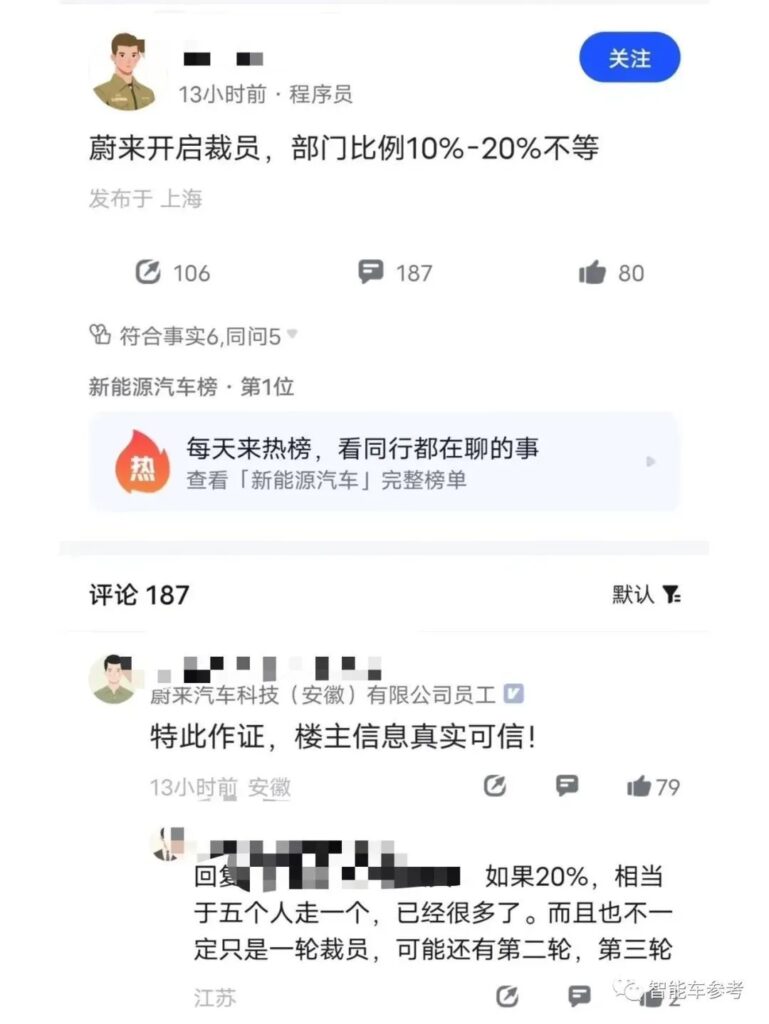
Bloomberg’s Mark Gurman declares “Apple car is still a ways out”. More specifically, Apple is said to not expected to “ship anything until later in the decade” for the project. The vehicle is still expected to make an appearance relatively close to 2030. (Apple Insider, Bloomberg)
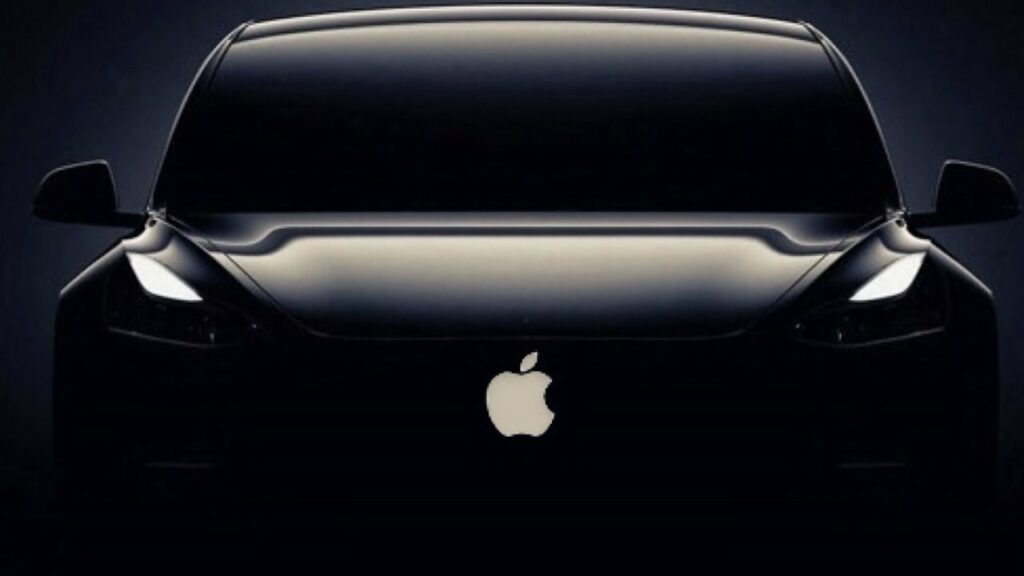

Apple’s CEO Tim Cook has highlighted many features in Apple devices that are based on artificial intelligence (AI) and machine learning, such as Personal Voice, Crash Detection, and ECG in the Apple Watch. He has also indicated that the company is also working on generative AI tools like ChatGPT. He has emphasized that the company wants to have its own generative AI responsibly and that customers will see these technologies become the “heart” of future products.(9to5Mac, Android Headlines)
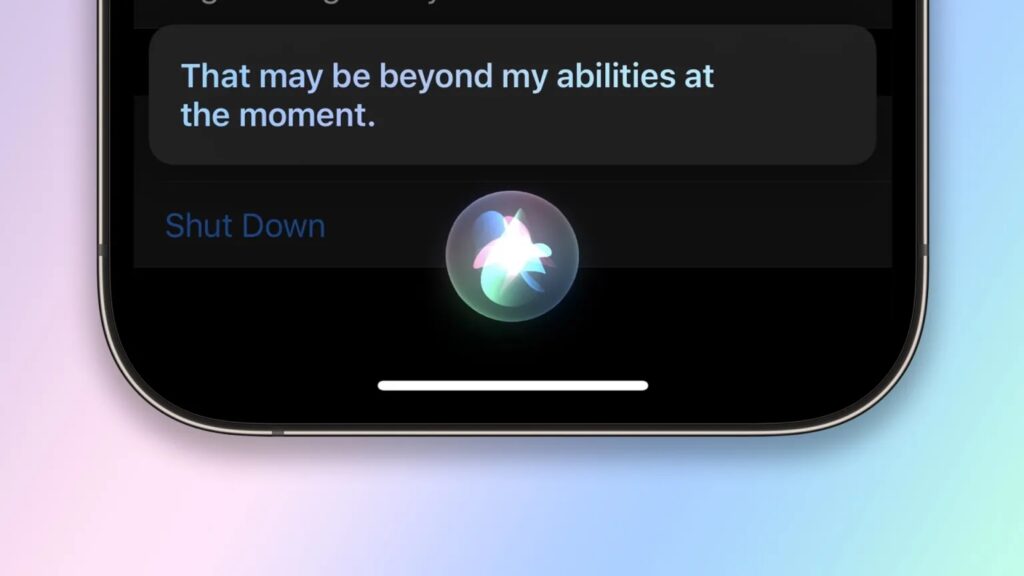
Microsoft and Siemens are deepening their partnership by bringing the benefits of generative AI to industries worldwide. As a first step, the companies are introducing Siemens Industrial Copilot, an AI-powered jointly developed assistant aimed at improving human-machine collaboration in manufacturing. In addition, the launch of the integration between Siemens Teamcenter software for product lifecycle management and Microsoft Teams will further pave the way to enabling the industrial metaverse. It will simplify virtual collaboration of design engineers, frontline workers, and other teams across business functions. (Android Headlines, Microsoft)

Sony Interactive Entertainment has acquired London-based deep learning company iSIZE to bolster its video processing and streaming capabilities. Founded in 2016, iSIZE focuses on AI applications for video with products like BitClear and BitSave. BitClear uses neural networks to improve the quality of heavily compressed video in real-time with minimal latency. BitSave allows encoders to produce video at significantly lower bitrates while maintaining or improving quality. These technologies could enhance Sony’s streaming offerings. (Neowin, Sony)
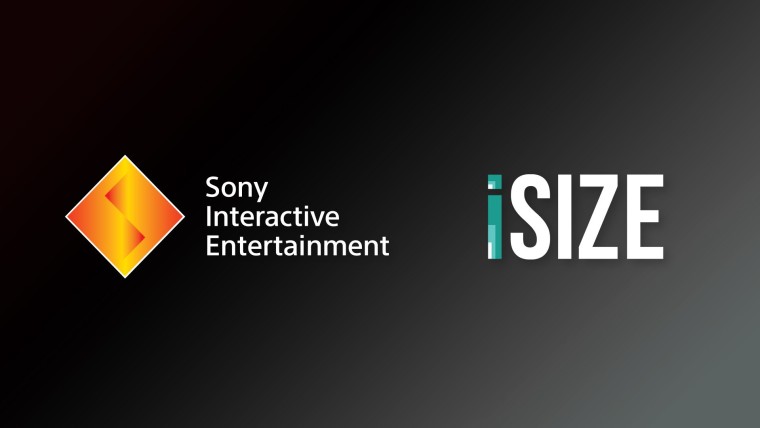
OpenAI launched a slew of new APIs. DALL-E 3, OpenAI’s text-to-image model, is now available via an API after first coming to ChatGPT and Bing Chat. Similar to the previous version of DALL-E (e.g. DALL-E 2), the API incorporates built-in moderation to help protect against misuse, OpenAI says. The DALL-E 3 API offers different format and quality options and resolutions ranging from 1024×1024 to 1792×1024, with prices starting at USD0.04 per generated image. Unlike the DALL-E 2 API, the DALL-E 3 can’t be used to create edited versions of images by having the model replace some areas of a pre-existing image or create variations of an existing image. And when a generation request is sent to DALL-E 3, OpenAI says that it will automatically re-write it “for safety reasons” and “to add more detail” — which could lead to less precise results depending on the prompt.(CN Beta, OpenAI, Bloomberg, TechCrunch, Yahoo)
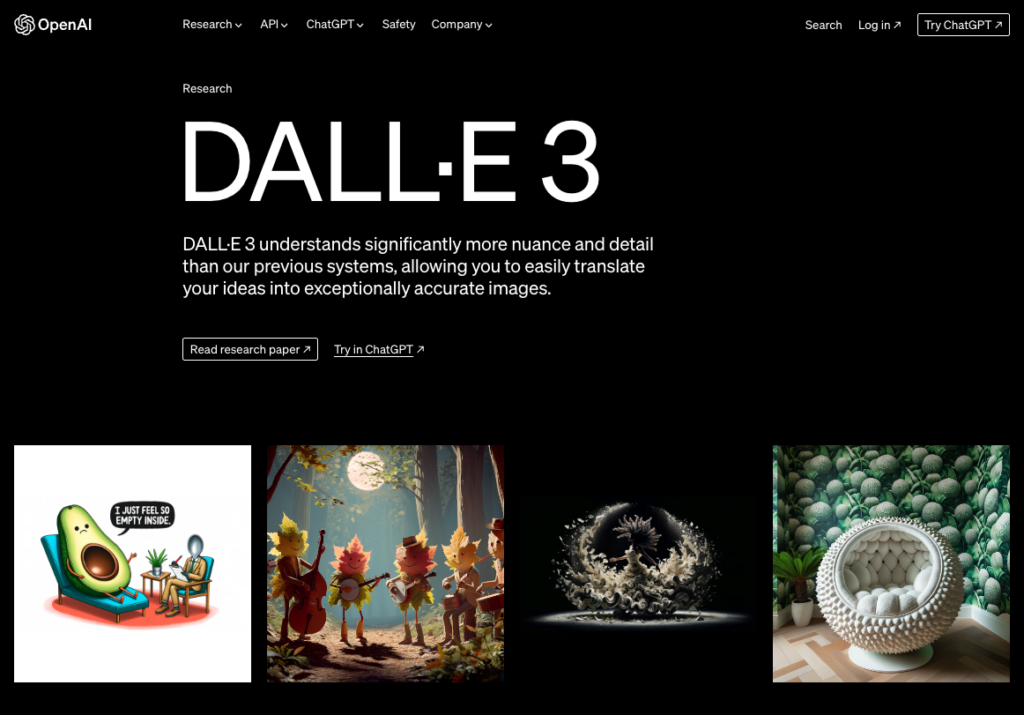
OpenAI has announced the launch of GPTs, which are custom versions of its ChatGPT generative AI that allows anyone to create versions of the AI that are more suited to specific tasks to fit the ways that users want to use it. Custom Instructions have been available from OpenAI in ChatGPT since Jul 2023, which allows users to set some preferences, but users have been asking for more control and the ability to further adjust the AI ever since, which this launch aims to satisfy. OpenAI has also announced that users can also share GPTs publicly, with the launch of the GPT Store later this month allowing verified builders to publish and share creations with the rest of the world. Additionally, OpenAI will spotlight specific creations that it thinks are the most “useful and delightful” in different categories such as productivity, education, and “just for fun”.(Neowin, OpenAI)
